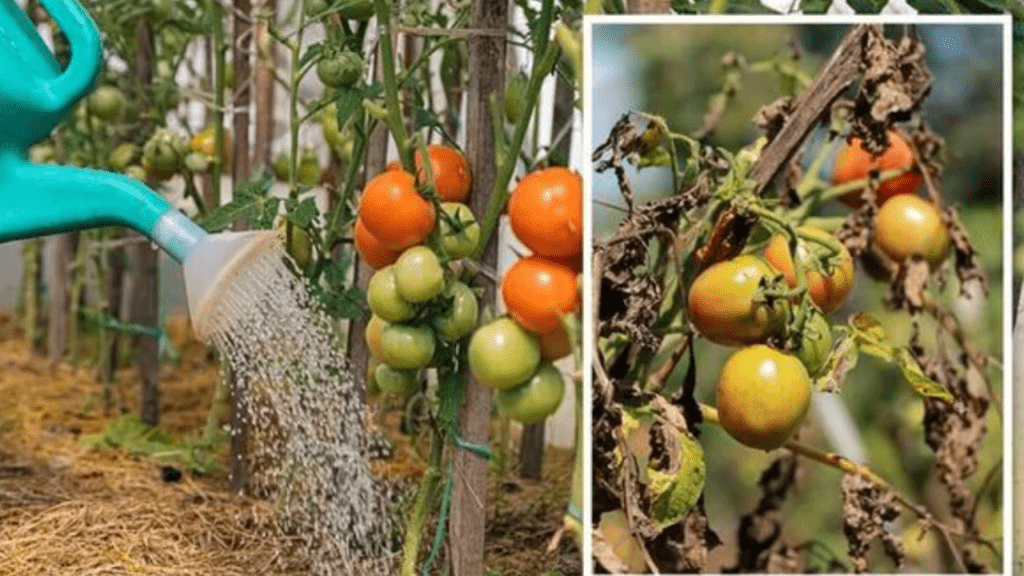
How to Save Overwatered Tomatoes: A Step-by-Step Guide
If you’ve been struggling with overwatered tomatoes in your garden, you’re not alone. It’s a common problem that many gardeners face, but the good news is that it can be fixed. In this post, we’ll walk you through a step-by-step guide on how to save overwatered tomatoes. We’ll cover how to identify the problem, adjust your watering habits, and care for the plants to ensure they recover and thrive. By following these tips, you’ll be able to rescue your tomatoes and enjoy a healthy, thriving garden.
Table of Contents
ToggleUnderstanding Overwatering in Tomatoes
What is Overwatering? Define overwatering and explain how it affects tomato plants.
Overwatering is when plants receive more water than they need, leading to waterlogged soil and root rot. Tomato plants are particularly susceptible to overwatering, as they prefer well-drained soil. When overwatered, tomato plants may exhibit symptoms such as yellowing leaves, wilting, and stunted growth. Overwatering can also lead to the development of fungal diseases, such as fusarium and verticillium wilt, which can ultimately kill the plant. It’s important to monitor the soil moisture and water your tomato plants sparingly to avoid overwatering. If you do notice signs of overwatering, it’s crucial to take steps to save your plants before it’s too late.
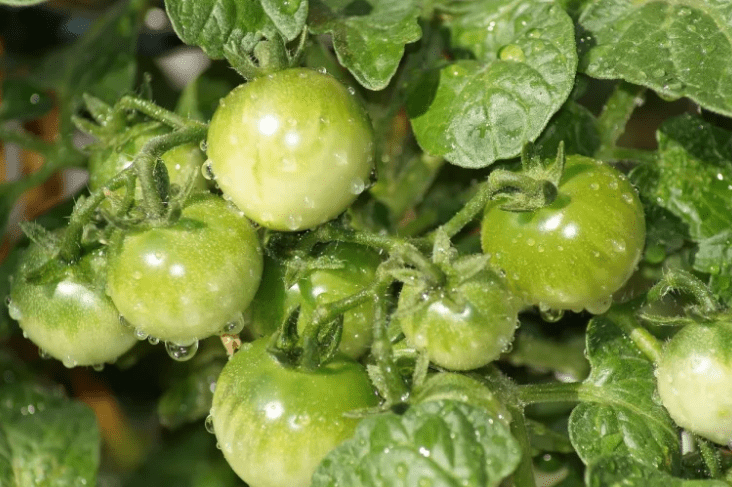
How to Save Overwatered Tomatoes: Step-by-Step Guide
Assess the Situation:
Check Soil Moisture: How to test soil moisture levels.
Overwatering can have a detrimental effect on tomato plants, as they prefer well-drained soil and can suffer from root rot if they receive too much water. It’s important to monitor the soil moisture levels to prevent overwatering. There are several methods to test soil moisture levels. One way is to use a soil moisture meter, which provides an accurate reading of the moisture content in the soil. You can also use the finger test, where you stick your finger into the soil to feel the moisture level. Another method is to use a trowel or shovel to dig a small hole in the soil and inspect the moisture content. It’s crucial to water tomato plants sparingly and only when the top inch of soil is dry. If you do notice signs of overwatering, such as yellowing leaves or wilting, it’s important to take action to save your plants. This may include adjusting your watering schedule, improving soil drainage, and removing any excess water from the soil. By monitoring soil moisture levels and watering your tomato plants appropriately, you can help them thrive and avoid the negative effects of overwatering.
Examine the Roots: Instructions on gently removing the plant to check for root health.
To examine the roots of your plants, you can gently remove the plant from the soil and inspect the roots for their health. It is important to do this carefully to avoid damaging the roots. One way to check for root health is to look for a healthy, white color in the roots. If you notice any brown or black spots, this could indicate rot or disease. It’s also important to check for a good balance of roots throughout the soil, as an uneven distribution could be a sign of poor root development. By examining the roots, you can determine if your plant is getting the proper nutrients and if the soil is allowing for good root growth. This can help you make adjustments to ensure the overall health and success of your plants.
Stop Watering Immediately:
Pause All Watering: Explain why it’s crucial to stop watering to allow the soil to dry out.
It is crucial to stop watering your plants and allow the soil to dry out to prevent overwatering and root rot. Overwatering can suffocate the roots and prevent them from absorbing the necessary nutrients and oxygen from the soil. Allowing the soil to dry out gives the roots a chance to breathe and promotes healthy root development. It also helps to prevent the spread of fungal diseases that thrive in moist environments. By pausing all watering, you can give your plants the best chance to thrive and ensure the overall health of your garden.
Improve Drainage:
Loosen the Soil: Techniques to improve soil aeration.
One technique to improve soil aeration is to loosen the soil. This can be done by using a garden fork or a soil aerator to break up compacted soil and create space for air, water, and nutrients to penetrate the roots of the plants. Loosening the soil also helps to improve drainage and prevent waterlogged conditions that can lead to root rot. Another technique to improve soil aeration is to add organic matter, such as compost or mulch, to the soil. Organic matter helps to improve the soil structure and allows for better air and water movement through the soil. It also provides essential nutrients for plant growth. Additionally, using raised beds or containers can help improve soil aeration by ensuring good drainage and preventing compaction. By implementing these techniques, you can create a healthy and thriving environment for your plants to grow and flourish.
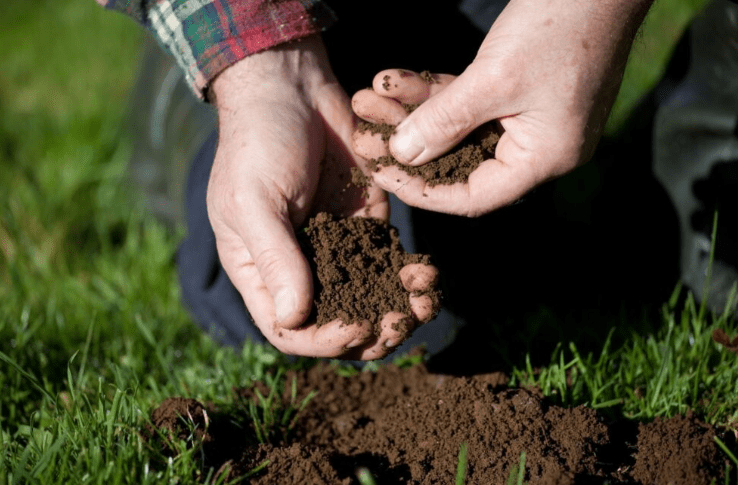
Amend Soil: Add organic matter or sand to improve drainage.
Amending soil is an important step in maintaining a healthy garden. One way to improve soil drainage is to add organic matter, such as compost or mulch, to the soil. This can help to improve soil structure and allow for better air and water movement through the soil. Another method is to incorporate sand into the soil, which can also improve drainage. Using a garden fork or soil aerator to break up compacted soil can create space for air, water, and nutrients to penetrate the roots of the plants, improving overall soil aeration. It’s also important to consider using raised beds or containers to ensure good drainage and prevent compaction. By taking these steps to amend the soil, you can create a healthy and thriving environment for your plants to grow and flourish.
Use Raised Beds or Containers: If applicable, consider moving plants to raised beds or containers with better drainage.
Amending soil is an important step in maintaining a healthy garden. One way to improve soil drainage is to add organic matter, such as compost or mulch, to the soil. This can help to improve soil structure and allow for better air and water movement through the soil. Another method is to incorporate sand into the soil, which can also improve drainage. Using a garden fork or soil aerator to break up compacted soil can create space for air, water, and nutrients to penetrate the roots of the plants, improving overall soil aeration. It’s also important to consider using raised beds or containers to ensure good drainage and prevent compaction. By taking these steps to amend the soil, you can create a healthy and thriving environment for your plants to grow and flourish. Using raised beds or containers with better drainage can help create optimal growing conditions for your plants, allowing them to thrive and produce healthy, vibrant fruits and vegetables.
Trim Affected Leaves and Stems:
Prune Damaged Foliage: Remove yellowing or wilting leaves to reduce stress on the plant.
Improving soil drainage is essential for the health and growth of your plants. One way to achieve this is by adding organic matter such as compost or mulch to the soil, which can help improve soil structure and allow for better air and water movement. Incorporating sand into the soil can also enhance drainage. Additionally, using a garden fork or soil aerator to break up compacted soil creates space for air, water, and nutrients to penetrate the roots, improving overall soil aeration. Raised beds or containers can also help ensure good drainage and prevent compaction. By taking these steps to amend the soil, you can create a healthy and thriving environment for your plants to grow and flourish. It’s also important to prune damaged foliage by removing yellowing or wilting leaves to reduce stress on the plant. By implementing these practices, you can promote optimal growing conditions for your plants, allowing them to thrive and produce healthy, vibrant foliage.
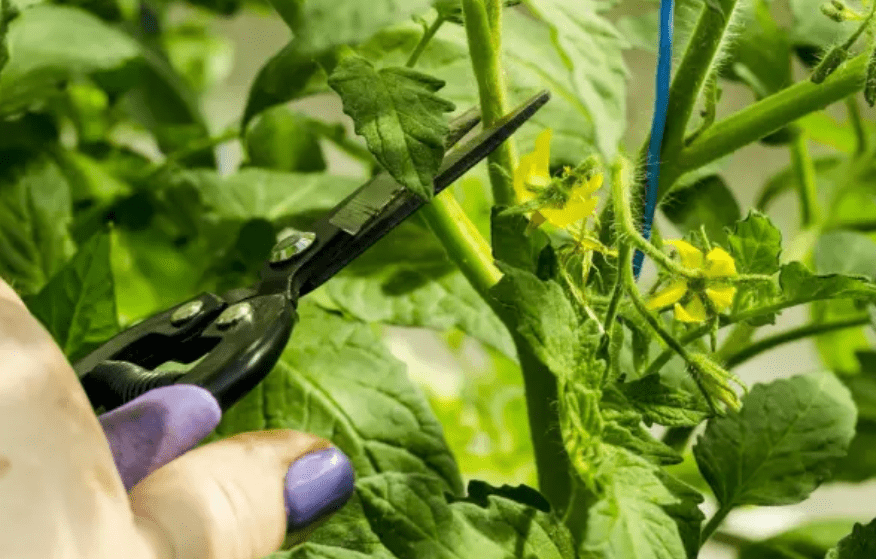
Sterilize Tools: Ensure tools are clean to prevent disease spread.
Sterilizing your gardening tools is crucial to prevent the spread of disease among your plants. This is especially important when working with plants that are susceptible to infections. You can sterilize your tools by soaking them in a solution of one part bleach to nine parts water for at least 30 minutes. After soaking, make sure to rinse the tools thoroughly with clean water and allow them to air dry. Additionally, you can use rubbing alcohol or hydrogen peroxide to clean and sterilize your tools. Regularly sterilizing your tools will help keep your plants healthy and prevent the spread of disease in your garden. So, make it a habit to sterilize your gardening tools every time you use them to maintain a healthy environment for your plants to thrive.
Treat the Roots:
Remove Rotting Roots: Carefully trim away any rotten roots.
When caring for your plants, it’s important to remove any rotting roots to prevent the spread of disease and ensure the health of your garden. To do this, carefully trim away any roots that appear to be decaying or discolored. By removing these rotting roots, you can help promote healthy growth and prevent the spread of disease to other parts of the plant. It’s important to use clean, sharp tools to minimize damage to the plant and prevent further infection. After trimming the rotting roots, make sure to monitor the plant for any signs of continued decay and take appropriate action to address any further issues. Taking the time to remove rotting roots and maintain the health of your plants will help ensure a thriving garden.
Use a Root Treatment: Apply a fungicide or root treatment if necessary.
When caring for your plants, it’s important to remove any rotting roots to prevent the spread of disease and ensure the health of your garden. To do this, carefully trim away any roots that appear to be decaying or discolored. By removing these rotting roots, you can help promote healthy growth and prevent the spread of disease to other parts of the plant. It’s important to use clean, sharp tools to minimize damage to the plant and prevent further infection. After trimming the rotting roots, make sure to monitor the plant for any signs of continued decay and take appropriate action to address any further issues. Taking the time to remove rotting roots and maintain the health of your plants will help ensure a thriving garden. Additionally, it’s a good idea to apply a fungicide or root treatment if necessary to further protect the plant’s roots from disease and promote overall plant health. Using a root treatment can help to strengthen the roots and protect them from potential issues, ensuring the continued growth and prosperity of your plants.
Replanting and Care:
Replant in Fresh Soil: If the soil is too waterlogged, replant tomatoes in fresh, well-draining soil.
To ensure the health and vitality of your tomatoes, it’s important to pay attention to the soil they’re planted in. If the soil is too waterlogged and causing issues for your tomato plants, it may be necessary to replant them in fresh, well-draining soil. To do this, carefully trim away any roots that appear to be decaying or discolored. By removing these rotting roots, you can help promote healthy growth and prevent the spread of disease to other parts of the plant. It’s important to use clean, sharp tools to minimize damage to the plant and prevent further infection. After trimming the rotting roots, make sure to monitor the plant for any signs of continued decay and take appropriate action to address any further issues. Taking the time to remove rotting roots and maintain the health of your plants will help ensure a thriving garden. Additionally, it’s a good idea to apply a fungicide or root treatment if necessary to further protect the plant’s roots from disease and promote overall plant health. Using a root treatment can help to strengthen the roots and protect them from potential issues, ensuring the continued growth and prosperity of your plants. Remember, replanting your tomatoes in fresh, well-draining soil and caring for their roots is essential for their overall health and success.
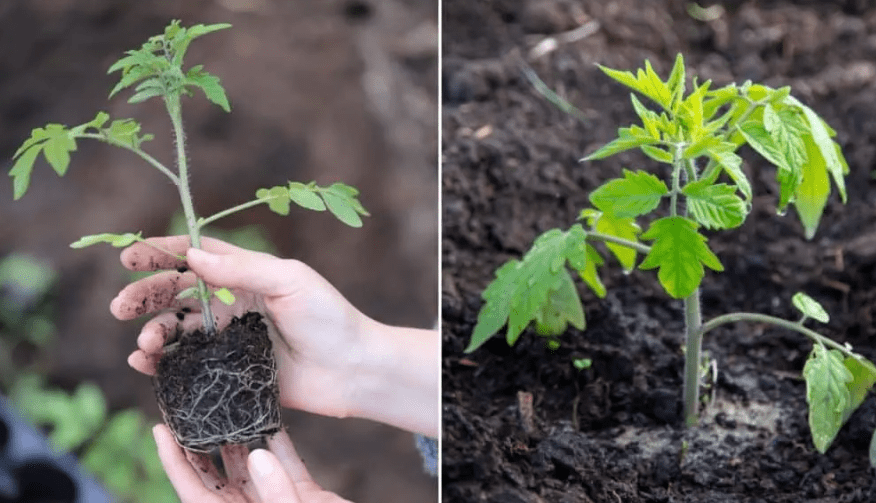
Provide Proper Support: Use stakes or cages to support the plant as it recovers.
It’s important to provide proper support for your plants as they recover from root rot. Using stakes or cages can help support the plant and prevent any further damage. By removing the rotting roots, you can promote healthy growth and prevent the spread of disease to other parts of the plant. Make sure to use clean, sharp tools to minimize damage and prevent further infection. After trimming the rotting roots, monitor the plant for any signs of continued decay and take appropriate action to address any further issues. It’s also a good idea to apply a fungicide or root treatment if necessary to further protect the plant’s roots from disease and promote overall plant health. Using a root treatment can help strengthen the roots and protect them from potential issues, ensuring the continued growth and prosperity of your plants. Remember to replant your tomatoes in fresh, well-draining soil and provide proper care for their roots to ensure their overall health and success.
Resume Watering Carefully:
Establish a Watering Schedule: Provide guidelines on how often to water tomatoes after recovery.
After trimming the rotting roots of your tomatoes, it’s important to establish a watering schedule to promote healthy growth and prevent any further damage. Provide guidelines on how often to water your tomatoes after recovery. Using stakes or cages can help support the plant and prevent any further damage. By removing the rotting roots, you can promote healthy growth and prevent the spread of disease to other parts of the plant. Make sure to use clean, sharp tools to minimize damage and prevent further infection. After trimming the rotting roots, monitor the plant for any signs of continued decay and take appropriate action to address any further issues. It’s also a good idea to apply a fungicide or root treatment if necessary to further protect the plant’s roots from disease and promote overall plant health. Using a root treatment can help strengthen the roots and protect them from potential issues, ensuring the continued growth and prosperity of your plants. Remember to replant your tomatoes in fresh, well-draining soil and provide proper care for their roots to ensure their overall health and success. Resume watering carefully and provide the necessary nourishment for their recovery.
Conclusion
In conclusion, saving overwatered tomatoes requires quick action and careful attention to the needs of the plants. By following the steps outlined in this guide, you can help your tomatoes recover and thrive, ensuring a successful growing season. It’s important to be mindful of your watering habits and to monitor the health of your plants to prevent overwatering in the future. With the right care and attention, your tomatoes will bounce back from being overwatered and produce a bountiful harvest.
Frequently asked questions And Answer
You can tell if your tomatoes have been overwatered if the leaves are turning yellow or if the fruit is cracking. The soil may also feel very wet and waterlogged.
The first step is to stop watering the tomatoes and allow the soil to dry out. You can also gently remove any standing water from the soil.
You can help the tomatoes recover by gently pruning any yellow or damaged leaves and removing any cracked or damaged fruit. This will allow the plant to redirect its energy to healthy growth.
Yes, you can add some organic fertilizer to the soil to help replenish any nutrients that may have been washed away by overwatering.
It may take a few weeks for the tomatoes to fully recover from overwatering, but with proper care and attention, they should start to show signs of improvement.
In severe cases, overwatering can cause permanent damage to the tomatoes, but with prompt action and proper care, you can often save the plants.
To prevent overwatering in the future, make sure to water your tomatoes only when the top inch of soil is dry, and consider using a drip irrigation system to control the amount of water the plants receive.
Yes, the same steps can be taken to save overwatered tomatoes in pots or containers. Just be sure to adjust the watering schedule accordingly to prevent future overwatering.
